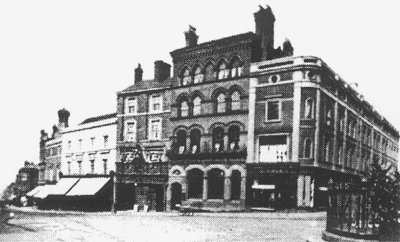Introduction
At varying times during the 20th Century, Wolverhampton and the
immediate surrounding areas of Wednesfield and Bilston had something in
the region of 25 cinemas. Those cinemas varied in size from the super
cinemas of the 30s with their luxurious surroundings to the flea
pits with their very claustrophobic interiors. However, whether the
local flicks was a super or a flea pit it was usually adored by its
clientele and very often full to bursting. It is the story of some of
those cinemas which is included here.
The story begins in 1909 when the Cinematograph Act was passed. The
Act required all cinemas to be licensed and to fulfil certain rules and
regulations and so from 191 0 onwards, cinemas really came into being.
In those earliest days, cinemas were sited in a whole range of premises
including shops and public halls but it was not very long before the
first purpose built cinemas were constructed and most of the converted
premises ceased to function (especially after World War 1).
During the 20s and 30s, the majority of the local cinemas were built
and many of those cinemas were super with luxurious foyers and auditoria
which could seat over 1000 customers. The designs of those cinemas were
often very elaborate and it is during this period that the Odeons,
Cliftons and Gaumonts appeared, both in this area and throughout the
country. It was also during this period that many of the smaller and
older cinemas became labelled as flea pits and began to find the
competition from the larger cinema chains very difficult to fight. In
fact, it was the war years of 1939-45 which prevented many of the
smaller cinemas from closing or being swallowed by their bigger
brothers.
After the war, very few cinemas were built anywhere in the country
and during the 50s and 60s, the majority of the local cinemas closed. It
is only in the very recent past that the development of the multiplex
cinema has seen a general revival in cinema building (possibly even in
Wolverhampton). However, let us take a closer look at some of the local
flicks
and their individual histories.
Some of the Earliest Cinemas (The Days of the Silent Movies)
It is quite likely that the earliest movies to come to the
area were shown by fairground showmen like the very famous Pat
Collins of Bloxwich. He included animated pictures and the bioscope
as part of his fairground show. The spectacle became more and more
elaborate, accompanied by music from the fairground organ and the tent
being brightly illuminated by electric lights. In 1907 Pat Collins
presented his Wonderland which
involved a very brightly lit (5000 electric lights and 14 arc lamps)
wooden construction in which the Bioscope was housed. It must have
presented a quite amazing sight!
After World War 1, Pat Collins bought three cinemas in the West
Midlands (Alhambra in Dudley Port, Olympia in Darlaston
and Electric Palace in Bloxwich).
While the fairgrounds were the most likely venues for Wolverhampton's
earliest film shows, there were other sites which were certainly used.
The main buildings involved were the Drill Hall which was located
in Stafford Street (the actual site was on the corner of Stafford Street
and Whitmore Street) and the Pavilion which was located in Castle
Street and ran through to Tower Street. The former building was the site
for a number of public gatherings and meetings (Asquith, Lloyd George,
Baden-Powell spoke there), so it would seem quite logical that the hall
would be used for the earliest public film shows. The shows involved the
use of portable projection boxes and screens. The audience probably sat
on benches. Such arrangements would have been made at other public halls
in the area.
The frontage of the Pavilion in Castle Street
is still in remarkably fine condition (it is now part of the Express &
Star buildings). It has not been used for entertainment purposes for
many years. It began life as a variety theatre and it is most likely
that the earliest film shows would have provided interval entertainment
between the variety turns. The Pavilion was almost certainly the first
premises in the town to obtain a Cinematograph Licence after the passing
of the 1909 Act. The Pavilion reportedly accommodated over 1000 patrons
but if one looks carefully at the still existing ground space and the
long narrow shape of the building, it would seem impossible for so many
people to have comfortably and safely watched a film show!
Perhaps this fact may have accounted for the closure of the Pavilion
during the years of the First World War.
 |
The first authentic cinema
in Wolverhampton was almost certainly the Electric Theatre or
Palace which opened for business on January 24th 1910.
The North side of Queen Square showing the Electric Theatre c. 1920. |
 |
|
 |
Next
Page |
|
Contents |
|















